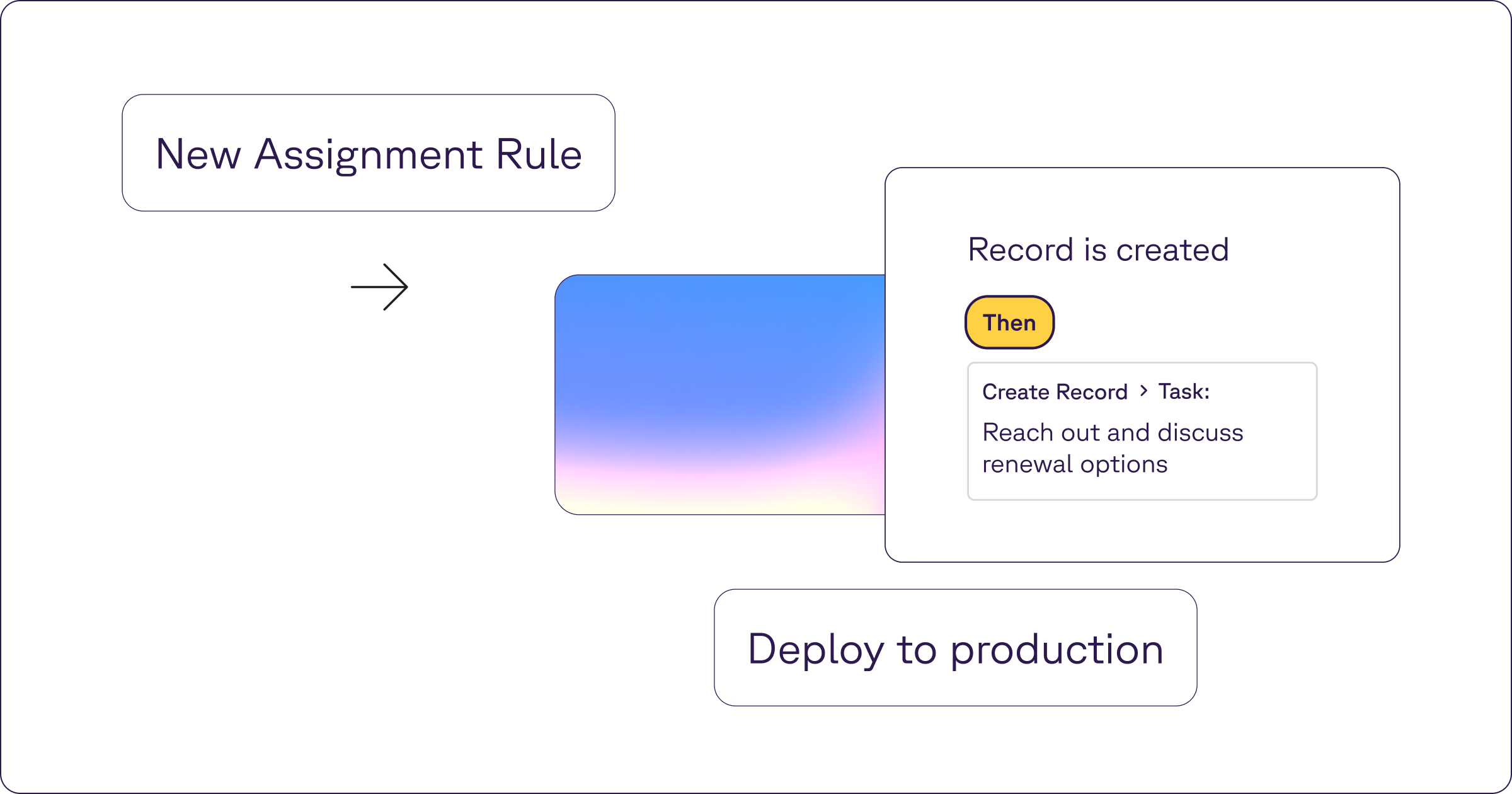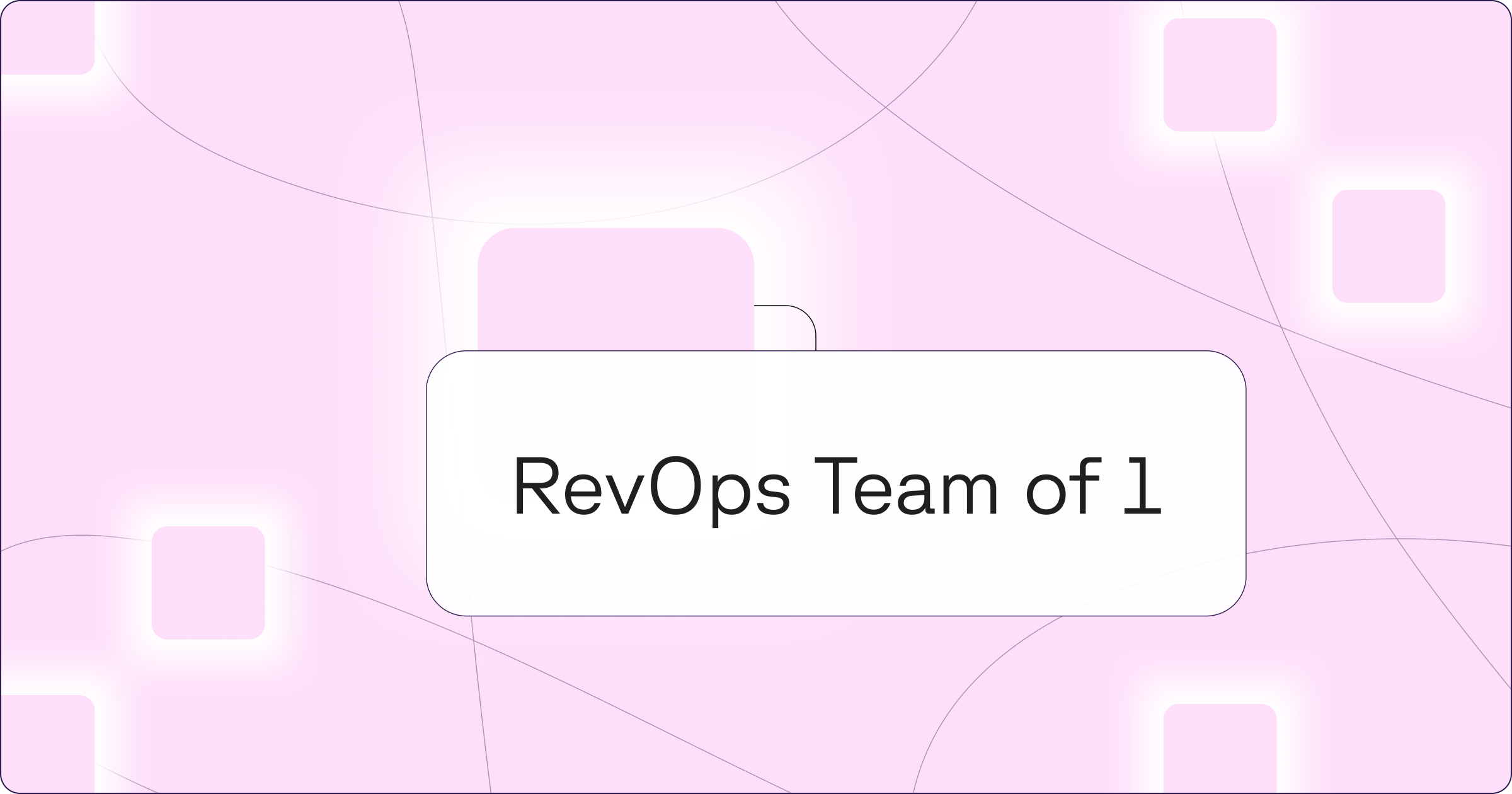If you’ve ever been a RevOps team of one, you already know - the job doesn’t start at strategic planning and end at reporting. It’s building Salesforce automations, troubleshooting routing issues, refining funnel definitions, fielding last-minute dashboard requests from leadership, and translating fuzzy GTM goals into clean, scalable processes, all before you’ve finished your first coffee.
It’s a lot.
I’ve been the solo RevOps lead at a few different companies, and I can tell you firsthand, there’s no shortage of high-leverage work to be done. The challenge is creating bandwidth to actually do it.
The reality of being a solo RevOps team
Being a team of one in Revenue Operations means wearing every hat - and often switching them every 10 minutes. One moment you're analyzing conversion rates and time-in-stage metrics, and the next, you're knee-deep in rebuilding lead status automations so Marketing can send nurture sequences.
You're the Salesforce admin, Go-To-Market strategist, dashboard builder, spreadsheet guru, and the go-between for every GTM team with a revenue number to hit. You’re both the strategic thought partner, the connective tissue, and the tactical executor.
Your 360 degree view of revenue org gives you the visibility into would move the needle, maybe it’s a better forecasting framework, an optimized post-sale handoff, or finally cleaning up six-month-old lead source logic, but those projects often take a back seat to urgent fires, data clean-up, and ad hoc leadership asks.
You’re in the loop on everything... but constantly underwater trying to stay ahead.
The bottleneck between strategy and execution
One of the hardest parts about being a solo RevOps team I’ve experienced is that you can see the playbook so clearly, but can’t find the time or technical resources to bring it to life.
Sales needs faster lead follow-up. Marketing needs better attribution. Customer Success wants a tighter renewal process. Finance needs revenue visibility. You need more hours in the day.
And more often than not, you’re duct taping workflows together just to keep things moving.
It’s not a lack of ideas or skill, it’s the constant context and priority switching and technical overhead that turn great ideas into “Revenue Operations Roadmap” projects.
Why Sweep changes the game
That’s exactly why I joined Sweep last month.
Sweep exists to help RevOps operators (especially teams of one) get out of their own way. It lets you turn strategic intent into scalable processes without needing to be a full time Salesforce developer or spend every waking hour inside the back end of Salesforce.
With Sweep, you can:
- Visually create and enforce GTM processes without custom Apex coding
- Design automations across Salesforce objects in a single workspace
- Map and enforce exit criteria, assignment logic, and handoffs - basically any Salesforce process you can think of, all without breaking your CRM or wanting to throw your laptop out the window due to Salesforce limitations
Need to enforce that every opportunity has a champion before moving to “Proposal Sent”? Easy. Want to automatically trigger onboarding sequences when an opportunity hits a certain stage? Done. Need to surface GTM rules in a clear, auditable way? Sweep makes it so simple.

From reactive to strategic
The real magic is what Sweep unlocks: time.
Time to zoom out and do the analysis. Time to build the territory models. Time to fix the clunky renewal flow that’s quietly costing you expansion revenue. Time to go from reactive to proactive.
And for a RevOps team of one, that’s the difference between surviving and scaling.
Sweep gives you leverage. It makes your ideas executable. And it clears the technical clutter so you can get back to doing what you do best, driving and executing on strategic initiatives that help your company grow. Book a demo to learn more.

